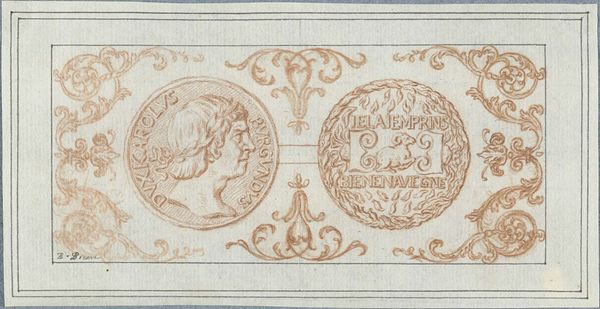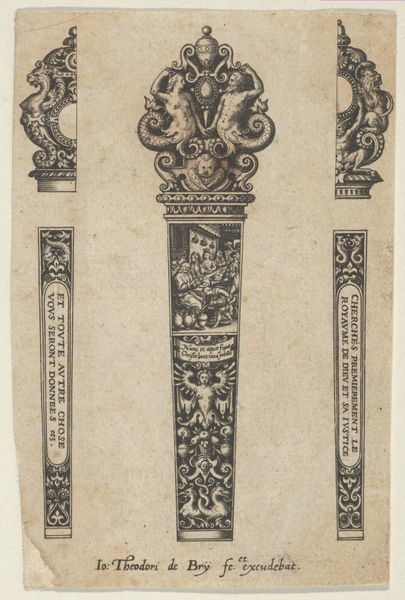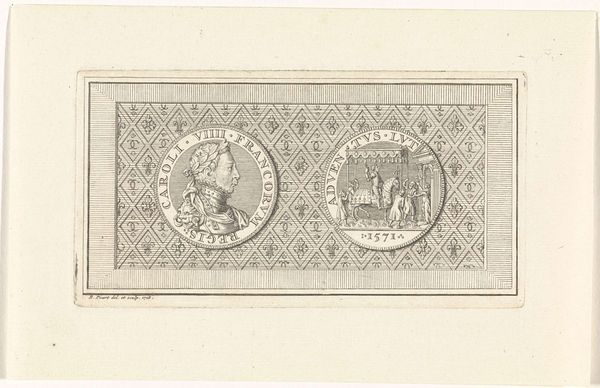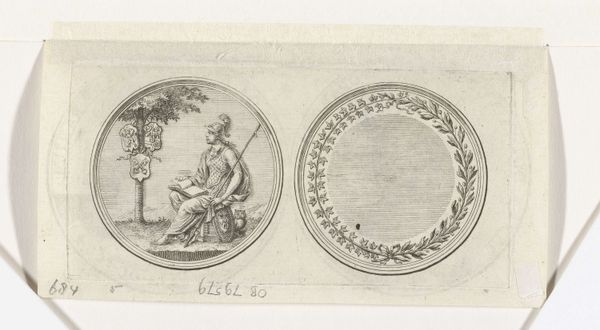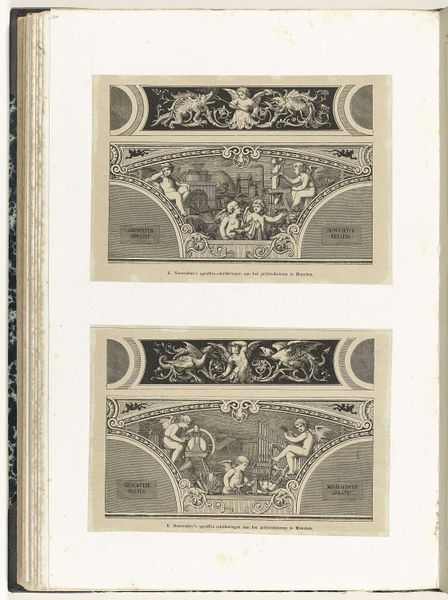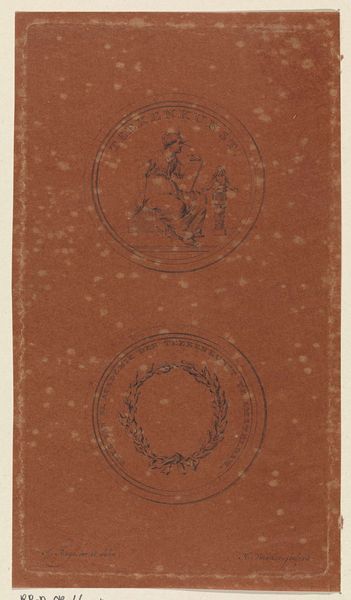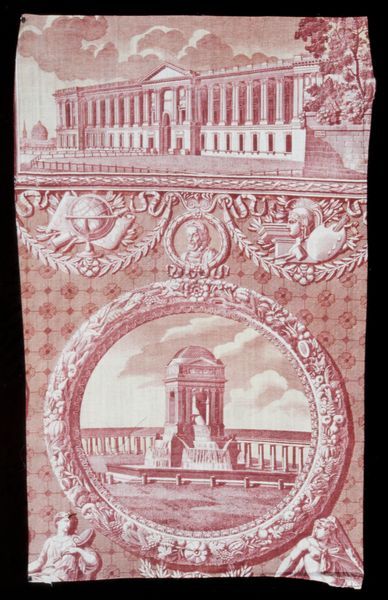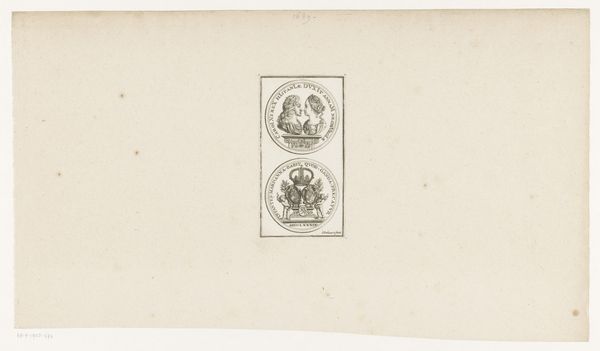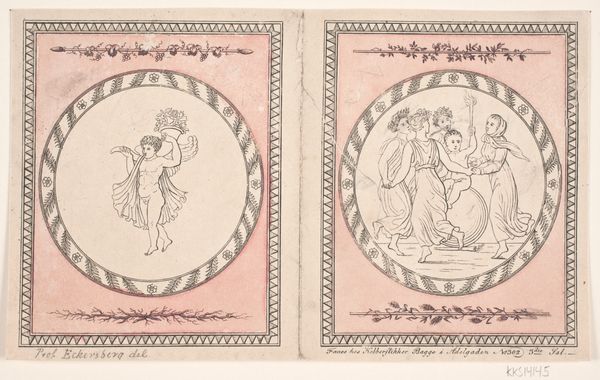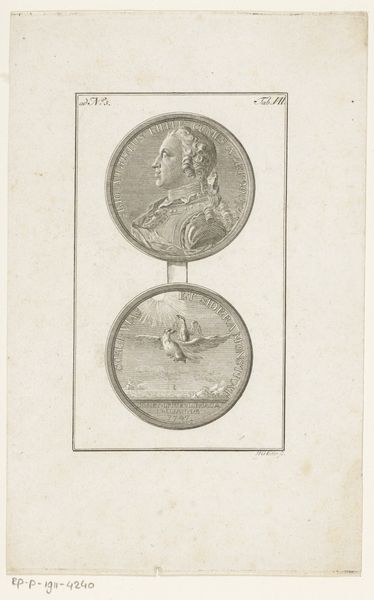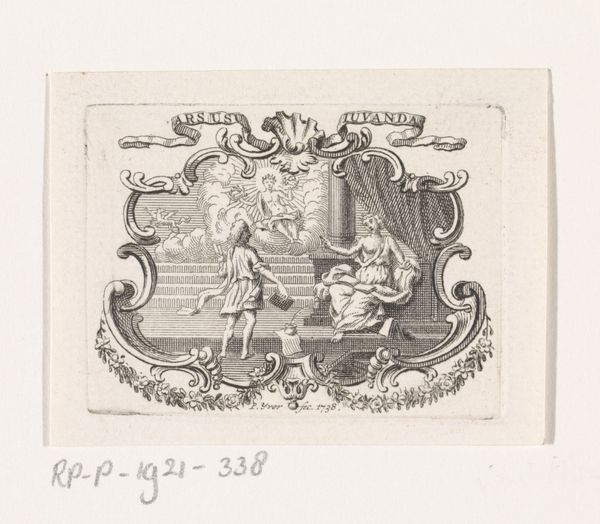
print, engraving
# print
#
figuration
#
romanticism
#
line
#
engraving
#
watercolor
Dimensions: 225 mm (height) x 92 mm (width) (bladmaal)
Editor: Here we have Oluf Bagge’s “Omslag til Nytårsvers”, created between 1806 and 1810. It's a print, using engraving and perhaps some watercolor. The figures seem to be in motion. What’s striking is that the bottom figure is upside down, compared to the dancing one above! What's your take on this piece? Curator: Consider the materials. Printmaking, particularly engraving, was a skilled labor. It allowed for wider dissemination of imagery. Look closely. The delicate lines speak to a time of meticulous craft. This wasn’t simply art for art's sake. The "Nytårsvers" in the title suggests it was a New Year’s greeting. We must examine how these greetings were produced, distributed, and consumed. Think about the engraver’s labor versus the recipient’s leisure. Does this dynamic change your perception? Editor: That makes sense. So the process of creating something that could be distributed widely adds another layer to the work itself. It challenges this traditional idea of the unique art object. Curator: Exactly! And what about the imagery? A festive gathering contrasted with a figure, quite literally, overturned? What comment could Bagge be making about labor and life via such contrasting depictions? Is he hinting at societal imbalances even in times of celebration? Consider too the consumption practices involved. How might such images of apparent celebration normalize or obfuscate the difficult socio-economic realities present in 19th Century Europe? Editor: Hmm, interesting. Perhaps he's saying something about the flip side of festivity? What at first seemed like a straightforward celebration might actually hold a more complex commentary on society and class. I hadn’t considered how the material and means of production influenced my reading of the image. Curator: Precisely. Material analysis can be more than just appreciating aesthetics. It can illuminate power structures inherent in artistic production. Remember to ask: who made it, how was it made, and for whom was it intended? Editor: I'll definitely keep that in mind. Thanks for pointing out all of that; I am definitely looking at this piece, and others, through new eyes now!
Comments
No comments
Be the first to comment and join the conversation on the ultimate creative platform.
